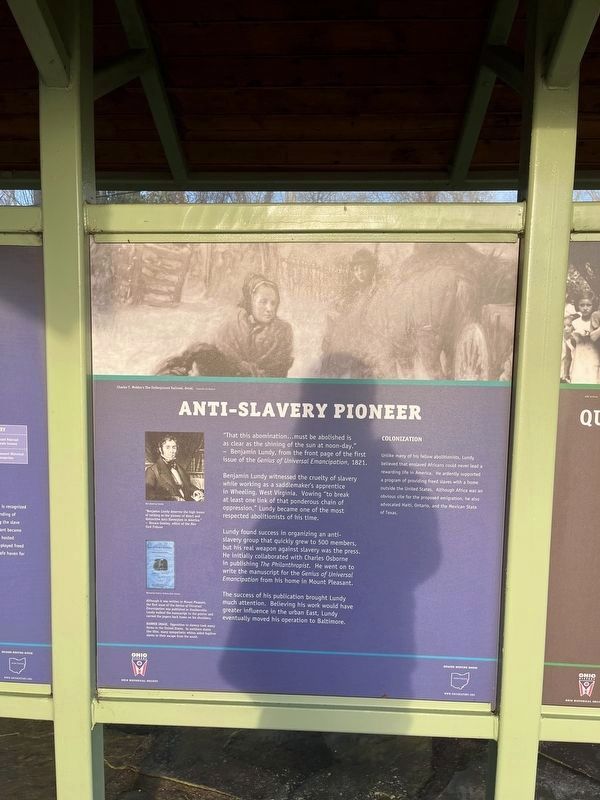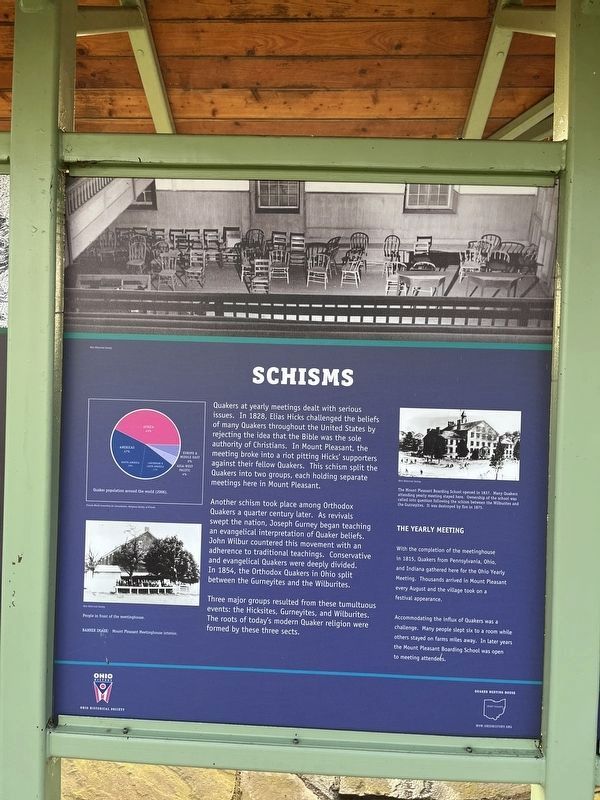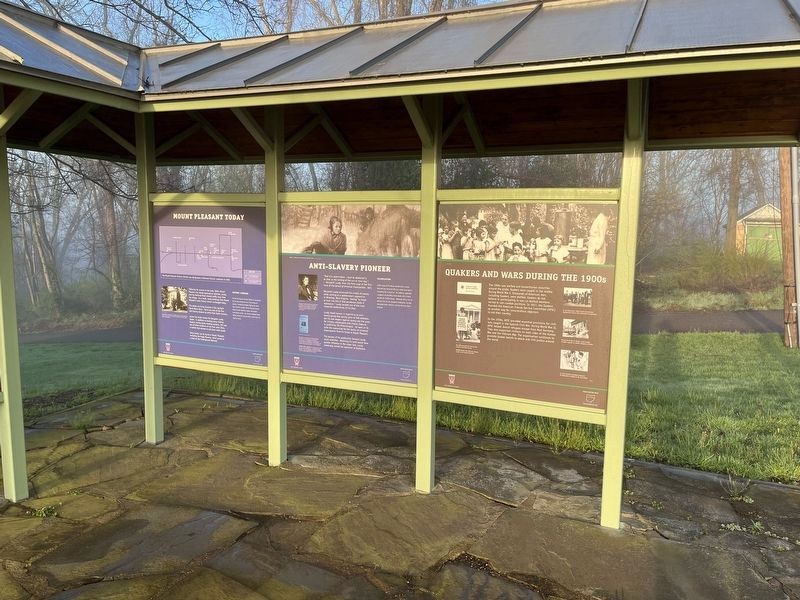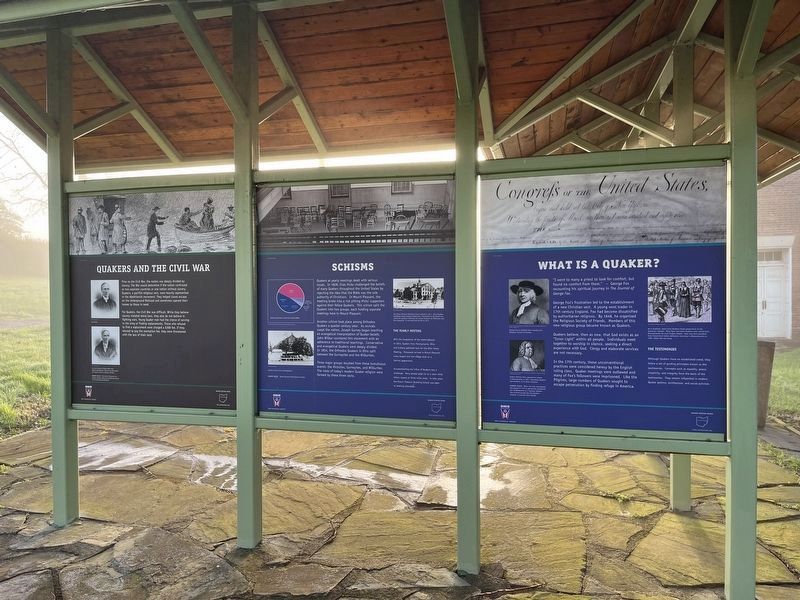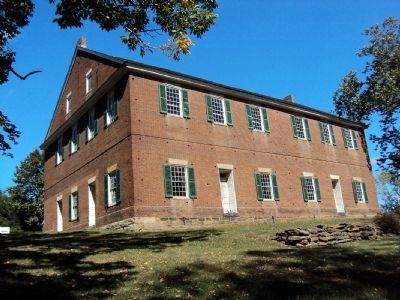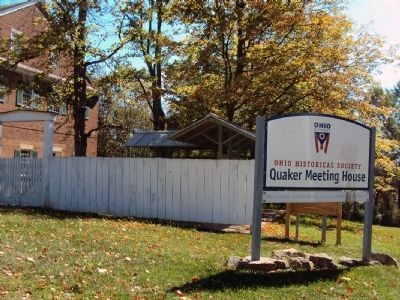Mount Pleasant in Jefferson County, Ohio — The American Midwest (Great Lakes)
Anti-Slavery Pioneer / Schisms
Anti-Slavery Pioneer
"That this abomination … must be abolished is as clear as the shining of the sun at noon-day." — Benjamin Lundy, from the front page of the first issue of the Genius of Universal Emancipation, 1821.
Benjamin Lundy witnessed the cruelty of slavery while working as a saddlemaker’s apprentice in Wheeling, West Virginia. Vowing “to break at least one link of that ponderous chain of oppression,” Lundy became one of the most respected abolitionists of his time.
Lundy found success in organizing an anti-slavery group that quickly grew to 500 members, but his real weapon against slavery was the press. He initially collaborated with Charles Osborne in publishing The Philanthropist. He went on to write the manuscript for the Genius of Universal Emancipation from his home in Mount Pleasant.
The success of his publication brought Lundy much attention. Believing his work would have greater influence in the urban East, Lundy eventually moved his operation to Baltimore.
[Sidebar:]
Colonization
Unlike many of his fellow abolitionists, Lundy believed that enslaved Africans could never lead a rewarding life in America. He ardently supported a program of providing freed slaves with a home outside the United States. Although Africa was an obvious site for the proposed emigration, he also advocated Haiti, Ontario, and the Mexican State of Texas.
[Captions:]
"Benjamin Lundy deserves the high honor of ranking as the pioneer of direct and distinctive Anti-Slaveryism in America." — Horace Greeley, editor of the New York Tribune
Although it was written in Mount Pleasant, the first issue of the Genius of Universal Emancipation was published in Steubenville. Lundy walked the manuscript to the printer and carried the papers back home on his shoulders.
Banner image: Opposition to slavery took many forms in the United States. In northern states like Ohio, many sympathetic whites aided fugitive slaves in their escape from the south.
Schisms
Quakers at yearly meetings dealt with serious issues. In 1828, Elias Hicks challenged the beliefs of many Quakers throughout the United States by rejecting the idea that the Bible was the sole authority of Christians. In Mount Pleasant, the meeting broke into a riot pitting Hicks’ supporters against their fellow Quakers. This schism split the Quakers into two groups, each holding separate meetings here in Mount Pleasant.
Another schism took place among Orthodox Quakers a quarter century later.
Three major groups resulted from these tumultuous events: the Hicksites, Gurneyites, and Wilburites. The roots of today’s modern Quaker religion were formed by these three sects.
[Sidebar:]
The Yearly Meeting
With the completion of the meetinghouse in 1815, Quakers from Pennsylvania, Ohio, and Indiana gathered here for the Ohio Yearly Meeting. Thousands arrived in Mount Pleasant every August and the village took on a festival appearance.
Accommodating the influx of Quakers was a challenge. Many people slept six to a room while others stayed on farms miles away. In later years, the Mount Pleasant Boarding School was open to meeting attendees.
[Caption:]
The Mount Pleasant Boarding School opened in 1837. Many Quakers attending yearly meeting stayed here. Ownership of the school was called into question following the schism between the Wilburites and the Gurneyites. It was destroyed by fire in 1875.
Erected by
Topics and series. This historical marker is listed in these topic lists: Abolition & Underground RR • African Americans • Churches & Religion • Colonial Era • Communications • Education • Settlements & Settlers. In addition, it is included in the Ohio Historical Society / The Ohio History Connection, and the Quakerism series lists. A significant historical year for this entry is 1648.
Location. 40° 10.418′ N, 80° 48.177′ W. Marker is in Mount Pleasant, Ohio, in Jefferson County. Marker is at the intersection of Market Street and South Street, on the right when traveling north on Market Street. Touch for map. Marker is at or near this postal address: 298 Market St, Dillonvale OH 43917, United States of America. Touch for directions.
Other nearby markers. At least 8 other markers are within walking distance of this marker. Quakers and Wars During the 1900s / Quakers and the Civil War (here, next to this marker); Mount Pleasant Today / What Is A Quaker? (here, next to this marker); Building the Meetinghouse / Abolition (here, next to this marker); Mount Pleasant's Beginnings / The Testimony of Equality (here, next to this marker); Samuel Gill House (about 500 feet away, measured in a direct line); Benjamin Lundy Home / Free Labor Store (about 500 feet
Also see . . . Quaker Yearly Meeting House. Ohio History Connection website entry (Submitted on October 26, 2010, by Bill Pfingsten of Bel Air, Maryland.)
Credits. This page was last revised on April 23, 2022. It was originally submitted on October 18, 2010, by Jamie Abel of Westerville, Ohio. This page has been viewed 1,665 times since then and 21 times this year. Photos: 1, 2, 3, 4. submitted on April 23, 2022, by Devry Becker Jones of Washington, District of Columbia. 5, 6. submitted on October 18, 2010, by Jamie Abel of Westerville, Ohio. • Bill Pfingsten was the editor who published this page.
